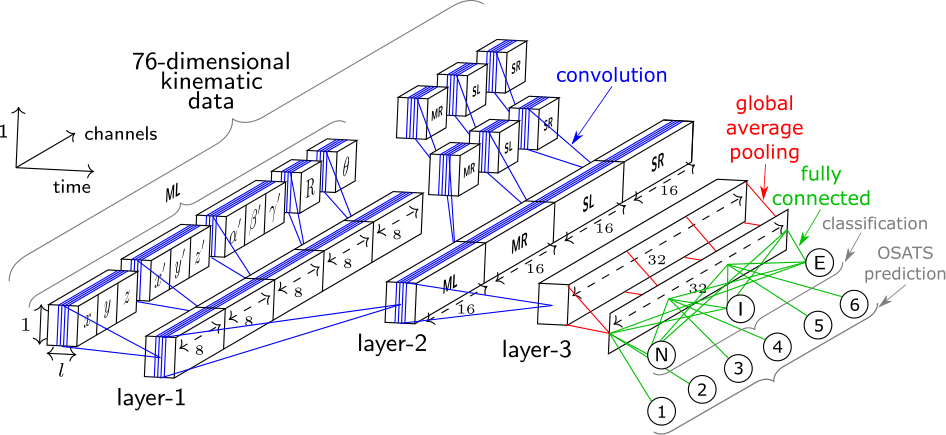Accurate and interpretable evaluation of surgical skills from kinematic data using fully convolutional neural networks
Purpose: Manual feedback from senior surgeons observing less experienced trainees is a laborious task that is very expensive, time-consuming and prone to subjectivity. With the number of surgical procedures increasing annually, there is an unprecedented need to provide an accurate, objective and automatic evaluation of trainees' surgical skills in order to improve surgical practice. Methods: In this paper, we designed a convolutional neural network (CNN) to classify surgical skills by extracting latent patterns in the trainees' motions performed during robotic surgery. The method is validated on the JIGSAWS dataset for two surgical skills evaluation tasks: classification and regression. Results: Our results show that deep neural networks constitute robust machine learning models that are able to reach new competitive state-of-the-art performance on the JIGSAWS dataset. While we leveraged from CNNs' efficiency, we were able to minimize its black-box effect using the class activation map technique. Conclusions: This characteristic allowed our method to automatically pinpoint which parts of the surgery influenced the skill evaluation the most, thus allowing us to explain a surgical skill classification and provide surgeons with a novel personalized feedback technique. We believe this type of interpretable machine learning model could integrate within "Operation Room 2.0" and support novice surgeons in improving their skills to eventually become experts.
PDF Abstract



 JIGSAWS
JIGSAWS